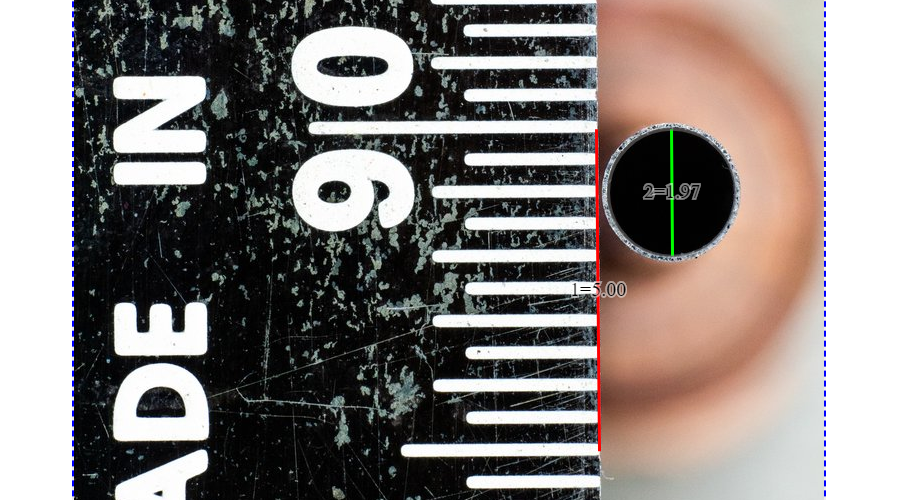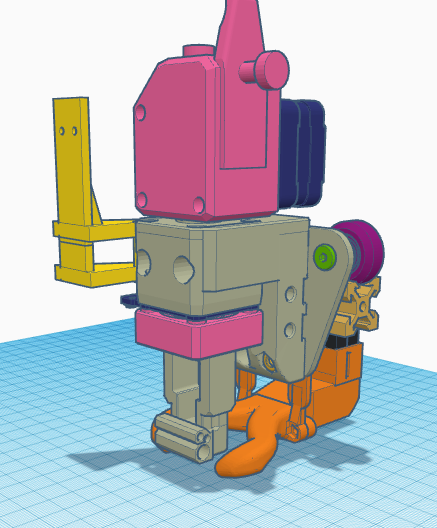Core-XY based on Rat Rig V-Core and Duet 2 Ethernet
-
@grizewald said in Core-XY based on Rat Rig V-Core and Duet 2 Ethernet:
I think what's needed is a laser filament diameter monitor to stop out of spec filament getting as far as the hot end!
or a 1.76mm hole in something that wont wear too quickly before the hotend.
-
@T3P3Tony That's an interesting idea! Maybe a small block of PTFE with a 1.76mm hole somewhere in the feed to the extruder, coupled to a spring loaded lever and microswitch.
When oversized filament tries to make it through the size check, it would cause the block to move on its lever and trigger the microswitch which could be connected to an end stop input.
I can think of a few ways to design the mechanism. Next time I take the hot end apart, I'll make an accurate measurement of the inside diameter of the heat break and see what the limit actually is.
Certainly, something to prevent out of spec filament getting as far as the hot end would save considerable frustration in the future.
-
@grizewald .....or how about a thin but hard metal plate just before the hot end with a hole that has a very sharp edge, so that if the filament is slightly over sized, it would "shave" a bit off ?
-
@deckingman @grizewald I love the two engineering approaches here, one to pause and alert the user, the other to fix it as its going!
-
@grizewald I checked the STEP file from the Mosquito documentation and it measured at 1,95 mm
I also measured it from a picture where it is 1,97 mm (see below). Ignore the IN, it just says MADE IN U.S.A., scale is in mm
-
@deckingman That could work, but I have my doubts about being able to create a sharp enough edge on a piece of stainless steel tubing and the ability of my extruder to exert enough force to shave PLA filament without skipping.
I just tried shaving some PLA with a fresh scalpel blade and the hardness of the filament was a significant obstacle.
-
@OBELIKS Thanks for the measurement. I guess my filament must have been really out of spec!
-
I have seen it before. But they did give a new roll and asked for the old one to check what happened.
-
Seeing as the heat break on the Mosquito is (say) 1.95mm wide, I wonder why the Capricorn tubing which I have between the extruder and the hot end didn't jam first.
-
@grizewald As you say, the filament would need to really out of spec to jam in a 1.95 -1.97 mm hole. I wonder if maybe a bit of swarf (metal or plastic) or grit got attached to the filament and found it's way in?
-
@grizewald PTFE tubing is still flexible and slippery enough to let even 2-2,1 mm through (in case of formed tip). With difficulty but still.
-
@deckingman said in Core-XY based on Rat Rig V-Core and Duet 2 Ethernet:
@grizewald As you say, the filament would need to really out of spec to jam in a 1.95 -1.97 mm hole. I wonder if maybe a bit of swarf (metal or plastic) or grit got attached to the filament and found it's way in?
I don't think so. When I think about it, the catastrophic jam that forced me to dismantle the hot end to clear it was almost certainly caused by heat creep. The makers of the Mosquito suggest that their tiny little 25mm fan should be OK run at 70% of full speed. That might be OK when running PETG or a similar high temperature filament, but when there isn't a clear path behind the hot end's heat break so that the tiny amount of air that the fan moves can flow freely, the heat break quite quickly gets hot enough to cause a jam with PLA.
In my case, the duct to the part cooling fan and part of the hot end mount run down behind the hot end's heat sink:

This compromises the overall air flow and even at 100%, the little 25mm fan just can't keep up. Maybe if I moved it to an always on fan connection, but in the end, I printed an adapter so that I could use an E3D 30mm fan. That keeps the heat break cool enough to print PLA now.
The other jams I had were certainly because the filament was too wide, but in those cases, the filament actually started to bind in the feed tube from my dry box to the printer. I run all my filament from a modified Polybox with PTFE tubes all the way from the box to the extruder. When not being used for printing, my spools of filament are stored in mylar bags with a 100g pouch of desiccant until they are needed.
Due to a lack of room in my apartment while I'm waiting for daughter number two to move out, my printer lives in my kitchen and that's probably the worst place possible from the point of view of humidity. Even so, this summer has been particularly humid here in Sweden and it's always good to be able to keep your filament dry and dust free anyway.